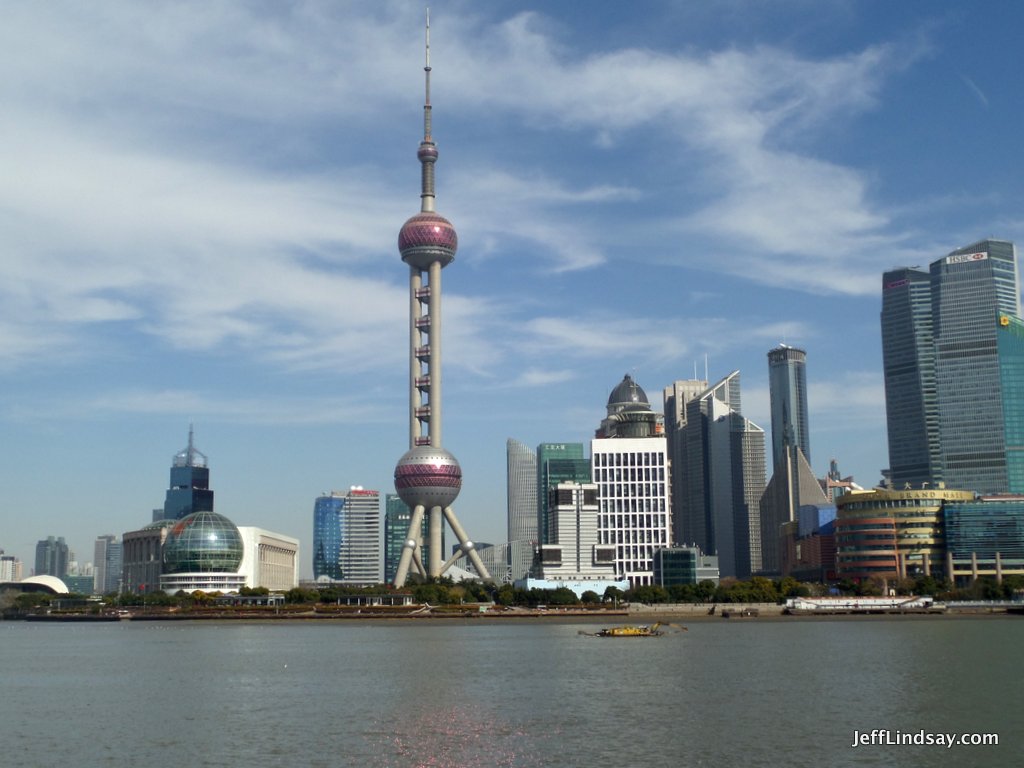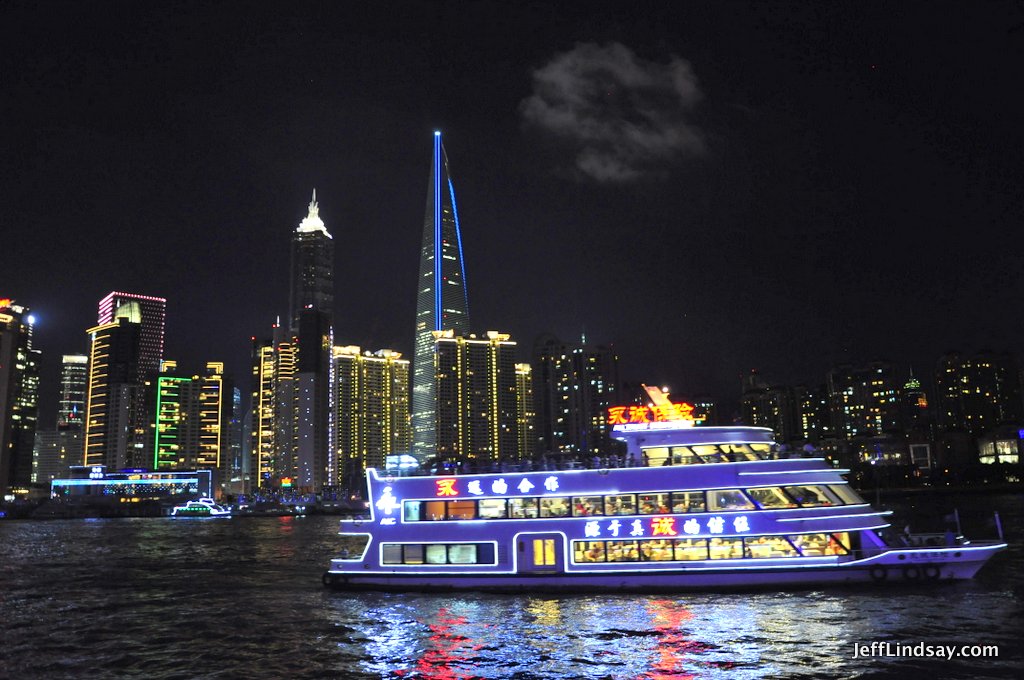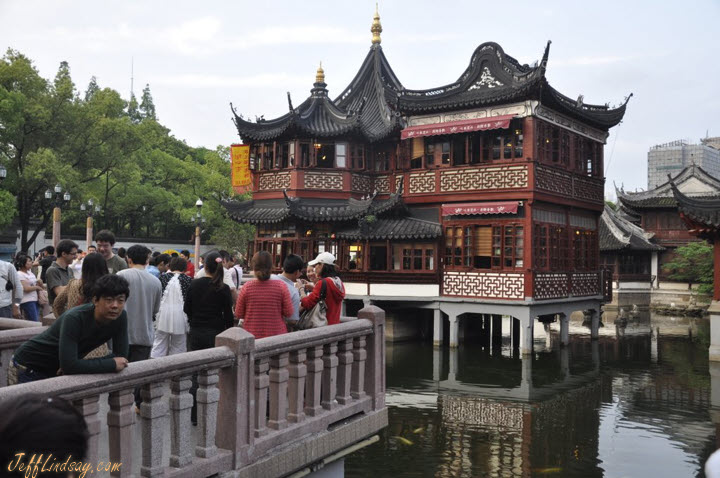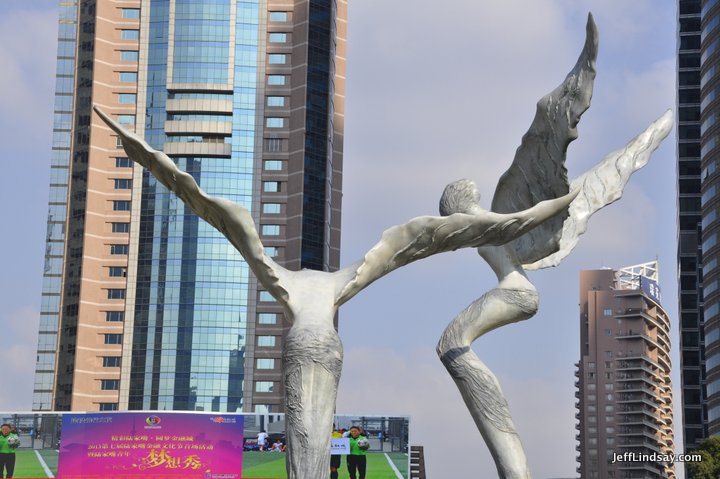Transportation in China
Bicycle Safety
Riding a bike can be one of the easiest ways to get around. It’s best to have your own bike in my opinion, but if you aren’t too tall and don’t have far to go, the rental bikes that are clogging many sidewalks in major cities can be a convenient and inexpensive way to go. But however you go, you need to understand the risks involved.
I discuss safety tips and offer my personal views on bicycle safety in China, some of which may be controversial, on the page, “Surviving Your Bike Ride in China.” Hint: you must be totally alert and prepared for vehicles to come from any direction, especially nearly silent electric bikes. Be alert with frequent glances over your shoulders and in other directions and be predictable, with no sudden moves or stops. But there’s more you need to consider. The tips I offer for bicycling apply in large part to motorcyling, especially using an electric bike. They are faster and thus perhaps more dangerous, but also might offer a little more protection (really?) in a collision. Not much. I used to have one and felt like it wasn’t worth the risk, but many love them. Be careful out there.
Train Tips
Train tickets can be purchased at train stations several days in advance (often needs to be no more than three days). Bring your passport! Some offices may accept a copy of your passport for purchasing a ticket, but there’s no guarantee. In major cities like Shanghai, there may be an English-speaking window at major train stations (the main Shanghai train station definitely has one and I think Hongqiao has employees who can speak some English). But don’t count on it. If you don’t speak Chinese, have your request written out or find a Chinese speaker who can help you. Foreigners can’t use the automated ticket machines at the train stations, so get in line and talk to a human. There are train ticket outlets at various locations that can also be used, at least for straightforward purchasing of tickets, but not for exchanges or returns. In Shanghai, there are perhaps a couple dozen train ticket outlets that foreigners might walk by without even noticing. Learning where these are can make life more convenient.
Most convenient of all is to have the tickets delivered to you. Hotels can order them and have them delivered to your hotel on the same day for a small fee. I’ve done that even when I wasn’t staying at a hotel. But I usually use a ticket delivery service. The one I use lets me call in, fax, or email an order, and then they deliver the tickets later that day for just 10 RMB a ticket. I like to add a tip even though tipping is not done in China as a rule, but I know the hard-working delivery people aren’t paid well and could use a little extra every now and then. If you use a delivery service for the first time, including a hotel service, they will need to get a copy of your passport on file.
Train tickets have numbers like D5284 or G12, where the first letter is related to the type of train (G is best – it’s the high speed line). When you have found the right gate for your train, a sign showing train numbers will show your train number in green when it’s time to board, often just a few minutes before departure. As you approach the turnstile, you place your paper ticket in a slot that reads it and spits out out on top of the device, and when you pluck it out the doors swing open for you to pass through. Go to the proper train and get in the car matching the car number printed on your ticket (upper right-hand corner has the car number and then the seat number). Make sure you get off at the right station (it really helps to know what the Chinese characters look like for your destination, but it is typically announced in English also). To leave the station, you will need to put your ticket back into the turnstile to be read and spit out as before. Keep the ticket as your receipt.
A ticket can be exchanged or returned before the scheduled train leaves. There’s a special line for exchanges (改ç¾ï¼‰and sometimes a different line for returns (退票).
To look at train schedules, the best system I know of is Huoche.com.cn but it’s all in Chinese. An English site for train schedules is Chinatrainguide.com or Cnvol.com. A good introduction to China trains, including how to read a train ticket, is at Seat61.com.
BONUS TIP: With a ticket in hand, you can often ride an earlier train without having to go through the hassle of exchanging your ticket, if you are willing to risk having to stand or bounce between available seats. To do this, it really helps to speak Chinese so you can go to the gate monitor and ask to get on, acknowledging that you may have to stand.
SLEEPER TRAINS: For long trips, you may need to take a sleeper train. When available, there are two options: soft sleepers and hard sleepers. Both offer similar rather hard beds, in my opinion, but the soft sleepers offer a lot more space and privacy. The soft sleepers, in my limited experience, are rooms with four beds, two on each side of a central aisle, two that are low and two that are up high, requiring a little climbing to each, with a door that can be closed to keep everyone else out. In the hard sleepers, the layout is similar but without the doors and with a stack of three beds on each side of every unit. This makes it harder to sit up on your bed, though you still can, and gives less privacy and more noise. But the hard sleeper makes it easier to meet people and have lots of conversations. At around 10 PM, I think, the lights will go out in the hard sleeper car and people are expected to not be too noisy. In the soft sleeper, the four occupants of the room can decide when to turn the lights out.
In sleeper trains, you give your ticket to the attendant, who then hands you a card showing which unit and bed you are assigned to (should match what is on your ticket, of course). The attendant will come and alert you after the last stop before yours so that you know it’s time to pack up and get ready to go. This is a pretty good system and makes it possible to sleep without having to constantly worry about the time. But to be safe, set your clock or phone to wake you up 20 minutes before your designated arrival time. Trains stop very briefly at some stations, so be ready to get off quickly. Have your bags in hand and be standing near the door before the train comes to a halt. I once watched a man scream and yell and plead with the train staff to stop the train and let him get off when he failed to get off at the right station, but to no avail. It was the kind of behavior that may well have gotten him arrested when he did get off. Who knows? Don’t risk the stress. But if disaster strikes, stay calm and don’t blow up. Stay likable, remember who you and who you need to be, and sometimes you’ll find some surprisingly kind help along the way.
By the way, sleeper trains do have beds that are long enough for people maybe up to 6’4″, maybe even 6’5″. I’m 6’6″ and was able to get some sleep the top bunk of a soft sleeper, though there were constant interruptions as others came in and out at various stops during the night. The beds are provided with pillows and a feather comforter. I don’t know how often they are changed. I think pesticides are applied periodically to keep things like bedbugs and lice under control, so I’m not even going to raise the specter of such critters by mentioning them here.
Electrical outlets on trains? Probably not. On the trains we had going to and then within Jiangxi province, there were no electrical outlets to be had. No way to recharge phones, etc. Keep that in mine. But I once did have a soft sleeper with a power outlet. I think this was on a train to Nanjing. Also, regular first or even second class cars with standard seats will occasionally have electrical outlets. It’s not common, from my experience, but great when it’s there.
Other resources:
Air Travel and Getting to Shanghai’s Airports
China has the friendliest, fastest airports I’ve seen. The security is polite and friendly, much nicer than what we face in the US where TSA can be invasive and even humiliating. Check-in is usually fast, but it’s smart to get to the airport two hours early, even for domestic flights, just in case. Of course, bring your passport. For ordering tickets for flights in and out of China, be sure to consider Ctrip.com. They have some of the best customer service I’ve ever seen and can help you with hotels also. Remarkable site and service. Other services like Orbitz won’t help you for many Chinese domestic flights. Be aware that some airlines may have weight limits for carry-ons and may actually check and require you to check bags that you would normally carry in the U.S. I’ve had good experiences with a wide variety of airlines, but be aware that flights in the evening are often delayed, in my experience.
If you are tall like me, you will want to get an exit row when possible because Chinese seats tend to have a little less leg room than I’d like. Getting an exit row is usually not possible over the phone or online but requires showing up at the airport early. I’ve often had good luck, almost as if there aren’t a lot of Chinese people bothering to ask for exit row seats.
Shanghai has two airports, the PuDong International Airport (PVG) for most overseas flights, and the Shanghai Hongqiao Airport (SHA) for most domestic flights and some international flights to places like Korea. For getting to the airport and back, primary choices include taxis, the subway, and the Maglev plus taxi or subway. Many people take the subway. Line 2 begins in the west with the Hongqiao Railway Station, followed by a station for the Hongqiao Airport Terminal 2 (transfer to Line 10 to get to Terminal 1). It then goes through town, crosses the HuangPu River, and continues south all the way to the distant PuDong Airport. From downtown to the PuDong airport takes over an hour. For Hongqiao, both Line 2 and Line 10 work and are reasonable ways to get there, though a cab can be faster if traffic is light, and possibly much slower at rush hour. To get to the PuDong Airport, many people take a cab, which can cost from 150 to 200 RMB from downtown Shanghai and requires 40 minutes to an hour or so, depending on traffic. For me it’s usually been 45 minutes, starting in LaoXiMen. Perhaps the best way to get to the PuDong Airport might be to use the Maglev. This is a train that begins at the LongYang station of Line 2 in PuDong, not far from downtown, and runs directly to the distant airport at 300 km/hr and sometimes even 400 km/hr. It’s quite an experience, though standard high-speed trains to many other destinations around Shanghai and Beijing now run at 300 km/hr, so you can experience that thrill without using the relatively expensive Maglev. The Maglev runs every 15 minutes from morning to about 9 pm at night and takes just 8 minutes to traverse the distance that would take about 40 minutes for a cab or 44 minutes for the subway. If you are in a hurry, the Maglev is the way to go. It costs 50 RMB if you buy a ticket there or 40 RMB if you use your metro card.
At the Longyang subway station, you will need to exit at ground level and then take escalators up to the elevated Maglev area in the building behind the subway station. There are signs in English and Chinese guiding you. There is also a Maglev museum on the ground floor of that building–one of Shanghai’s lonelier museums, trying to hold on to the glory that the Maglev represented when it was build here long ago. It is older technology now and fairly expensive, so I hear it will be decommissioned by 2015. I hope it stays.
Subway and Bus Tips
China’s subways are wonderful, when available. I love the system in Shanghai which tends to offer good climate control, though they can be highly crowded at rush hour (also known as push hour or squish hour, especially on Line 1 and Line 2, the two oldest and most heavily used routes. Beijing has a pretty good system and I’ve also been impressed with Shenzhen’s and Nanjing’s. Suzhou recently opened theirs and it will continue to grow.
If you are going to be traveling for more than a day or two in a city, buy a transport card at one of the service centers in the subway station. In Shanghai they cost 25 RMB and can then be loaded with whatever amount you want to put on it. (These also make great gifts.) You swipe the cards at the turnstiles when entering and exiting the sub and fares are electronically deducted from your card (often 2 to 6 RMB, depending on distance traveled and the city you are in). While that may seem cheap to you, a lot of Chinese people don’t ride the subway because it’s more expensive than the bus. Your transport card in Shanghai and probably in other cities can be used for the bus as well. A bus fare is 2 RMB in Shanghai and I believe transfer is possible on the same fare. If you are going to transfer, you may need a strip of paper from an attendant before you get off the bus if you’ve paid cash. I think if you swipe your card the system will recognize a transfer. I don’t use the bus much so let me know if you encounter something different.
In Shanghai, the time between subway stations tends to be around 3 to 4 minutes in the downtown area, so going 5 stations might take around 15+ minutes. You can plan routes and see times required using the Explore Shanghai app available for IOS and Android platforms. It’s also available as an online tool at https://www.exploreshanghai.com/metro/. The same group has apps for Beijing, Shenzhen, Guanzhou, Taipei, Hongkong, and Singapore.
Learning to use the bus requires some experienced help or a good app or webpage. It’s a wonderful way to explore a town and see things you would miss in a sub. Google Maps is one resource you can use. When zoomed in enough, you will see little bus icons where bus stops are located, and clicking on them will provide information about the bus lines and highlight the routes you can take. There are other apps that can let you find the right combination of buses to get around.
As a foreigner in China, be on your best behavior when on buses, trains, or other crowded public places because you will be watched and your example does make a difference. You can do good with a little patience, a smile, and perhaps a willingness to stand so others in need may sit. Don’t let your frustrations and pains of the day get in the way of a chance to life others a little.
Surviving Taxis and Cars
Some of the most suspenseful action in China occurs in cab rides. Seatbelts are often missing, but I’m grateful whenever a cab does have one because I usually feel like I need it. Driving is not as wild as it might be in many other nations, but on the streets of Shanghai or Beijing or wherever, you’ll quickly notice that you’re not in Kansas anymore. Driving in China requires nerves and aggression. Drivers learn to jump into spaces with almost surgical precision and to fight for their place with rules that seem fluid and capricious. It’s a different pace, but it actually works and accidents are surprisingly rare, though they do occur. In two years here, I haven’t had any, but my wife was in one.
At airports, train stations, and other popular spots, you will be approached by people offering to give you a taxi ride. These are illegal “black cabs” that will overcharge you and could be more dangerous. Avoid those. However, some foreigners do take the black cabs when no regular metered cabs are available (this can happen at big events, rain, etc.), but don’t do this unless you know what the normal fare is so you only pay, say, double, and unless you know where you are going, and unless–well, don’t do it. But I know people who have done it without too much trouble.
When you get in a cab, make sure there is a meter, otherwise the driver can just make up a price. Know what the price should be approximately. For example, from downtown Shanghai to the PuDong airport, it will cost around 180 RMB. If a fixed meter shows you owe 1000 RMB, wave a policeman over, take a photo, get the receipt and license plate number, etc. You’re being taken I would suggest you just give something over the normal fare, like 220 RMB, and walk away, if you can. But I haven’t had that happen to me.
When you are at a train station or airport with a long line waiting for taxis, you may be tempted to talk away with a black cab driver promising instant access to their vehicle. They also may promise that their fare is “the same” as a cab, which almost certainly won’t be true. The sales pitch may come from a sweet looking older man or woman that you’d like to trust (this may or may not be the person into whose hands you will entrust your life once you step into their unlicensed vehicle). Notice that none of the in-the-know local Chinese in the line are willing to talk off with the black cab drivers. They focus on newcomers and especially gullible foreigners. I suggest staying in line and not trying the higher risk, higher cost shortcut. Recently one persistent black cab saleswoman told us she would take us from the Nanchang train station to the Nanchang airport for “the same price” as a cab, but her price was 180 RMB when we knew the cab price would be around 80. At first we liked her and were tempted when the price came down to 130 RMB, but something about her started seeming a bit scary and frantic, and we eventually just had to put her on ignore as she and several peers turned the pressure up. Intense. None of the locals around us looked the least interested in the black cab gang.
Lost items: Sooner or later, you are going to lose something in China, and it can easily be a taxi where this happens. It’s easy for a phone or keys to slip out of a pocket, or to drop a wallet or passport (but don’t ever handle your passport in a way where you can drop it in the rush of getting in or out of a taxi!), or to leave a bag in the trunk or on a seat. Once the taxi drives away, your primary hope for recovering your goods is in the fapiao (official receipt) that you obtained before you left the taxi. Oh, you did ask for the fapiao, right? This can become one of the most important habits for you to develop. Never get out of a taxi until you have the printed fapiao. The information on it identifies the company and the vehicle so that the driver can be contacted in order for you to obtain your lost item. In our two years in Shanghai, we have obtained fapiaos for almost every taxi ride. But getting the fapiao is annoyingly slow, taking maybe 20 extra seconds that you could be using for something more useful like running frantically to catch your train. Once when my wife needed to take a cab to work and was on the very of being late, she skipped the fapiao process and was relieved to clock in on time with less than a minute to spare. Moments later she realized that she had left her suitcase in the trunk of the cab that had already driven off. No fapiao. After work that night, we were going to meet at a train station and take an overnight train deep into Jiangxi Province for a big 3-day trip. The loss of her bag was a big set back.
The story of my wife’s lost bag actually had a happy ending thanks to the prevalence of surveillance cameras in China. My wife had taken a taxi from just in front of our apartment complex, in sight of one of the surveillance cameras that monitor the area. The menwei (gate guards), perhaps some of the most important people for you to befriend, were sympathetic and extremely helpful. They took me into their surveillance center and pulled up the video for the time when my wife got in the taxi, and I was able to watch her from two different angles. They could see the cab and then called the menwei who was closest to the area, and he knew who the cabbie was. Within two hours her bag was back at our apartment where I would pick it up that evening on my way to the train station to meet my wife. What a relief. Lessons: (1) Always get the fapiao. (2) If in a rush, keep your bags on your lap or next to you so you won’t risk leaving something in the trunk. (3) Maintain good relations with your local guards. And of course, (4) don’t leave stuff behind.






